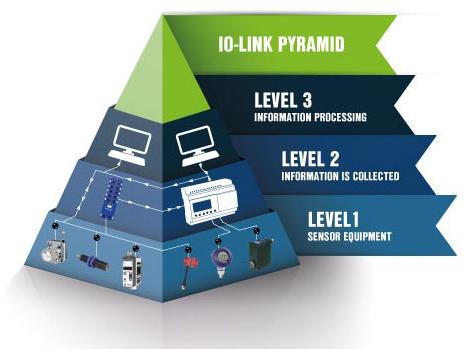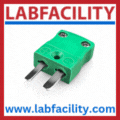
Posted to News on 16th Mar 2022, 08:41
Reduce costs, improve productivity and drive up efficiency

With machine builders looking to help their end user customers reduce production costs, improve productivity, achieve their maximum production potential and drive down maintenance requirements, the role of communications between sensors and actuators and the machine control system has come to the fore.
IO-Link is an interface that simplifies communication with sensors and actuators. Because it is standardised internationally, there are no worries about whether different components from different manufacturers are compatible. Different products can communicate to the same master, which passes this information on to software, which then refines the information. It is also possible to send information directly from sensor level to software.
Looking at the IO-Link pyramid, level 1 is where we find smart sensors, feeding data upwards in the pyramid to levels 2 and 3 over IO-Link. The sensors can also be configured remotely, making the products ‘smart’.
In level 2, information is collected with the help of a master. The need to have to configure long wiring to the machine level is removed, and you can also configure the sensors remotely, so you don't have to go out to the site to adjust the settings.
Level 3 is where the information is processed. The data from levels 1 and/or 2 is used to make calculations regarding efficiency, operating time and future maintenance with the help of software, that compiles the information. From here, you can also control and configure your devices further down the chain.
Key advantages of IO-Link
Making use of IO-Link brings a number of advantages to a machine builder’s end user customers. IO-link allows the user to collect information from sensors – with the ability to configure those sensors remotely. And thanks to the standardised IO-link interface, all products can collaborate regardless of brand, saving time and resources on integration and translations between different protocols.
During maintenance, it is easy to time-efficiently replace a faulty device with the same settings as the replaced product. IO-Link also helps you to avoid unplanned downtime, and once you do plan to stop production it affords the ability to replace several products at the same time.
Further, with the help of IO-link, you can see the status of your products. In addition, the simplicity of IO-link means that fewer errors occur when the system is connected.
OEM Automatic offers a wide range of different IO-Link products, and combines this with cutting-edge knowledge in different areas. And OEM Automatic collaborates with partners that add a lot of knowledge and experience with integration, which is about connecting different smart products that can deliver information, and managing this information to benefit your process and configure your products.
Let’s consider the application of some of these key products on a typical production line. A power supply is the heart of every application. Via IO-Link, the power supply communicates the status so that you can plan maintenance, avoid downtime, and perform troubleshooting faster.
Staying with panel components, what about temperature and regulation? OEM Automatic offers a compact humidity and temperature sensor from Stego that combines three functions in one: sensor, interface and transmitter. This sensor uses the latest microtechnology and microsystem technology used in intelligent sensors of small sizes, and it is compatible with Stego Connect for the integration of analogue devices.
Sensing and safety are also key aspects of the production line to consider. For example, inductive sensors are used for position indication, impulse or motion detection. The inductive sensor lacks moving parts and is therefore suitable for applications with a high contact frequency. The switching signal, parameter-diagnostic and communication data are transmitted using point-to-point connection. The inductive sensors can be configured in IO-Link mode and then used in IO-Link or SIO (Standard IO mode).
Encoders are used to measure speed, position, or movement. Kübler’s IO-Link products are prepared for IIoT and can be used to sew together a complete system for measuring, for example, angle, speed and length.
We might look, to, at pressure and flow requirements along the production line. Flow, pressure and level monitoring might be integral aspects of the process, and OEM Automatic offers a wide range of flow, temperature, pressure and level monitoring instrumentation with IO-Link. Similarly, where pressure in pneumatic systems must be controlled, the company offers IO-Link proportional valves to regulate the speed of pistons and the power of pneumatic press tools.
If the production line is a food and beverage or pharmaceutical installation where hygiene is key OEM Automatic offers a wide range of hygienic valves with IO-Link developed for economic flow control in the likes of the biotechnology, brewery, food, and dairy industries. Our range covers some of the different valves you may need in your process.
Also in food production, media is usually analysed to keep track of, for example, concentrated concentration and turbidity in the process. OEM Automatic offers IO-Link turbidity sensors to measure conductivity and turbidity in liquid media.
As a key supplier to the automation industry, OEM Automatic is well placed to help end users streamline their processes.






